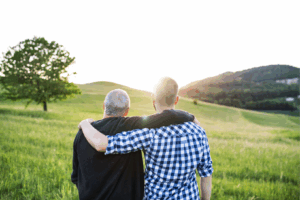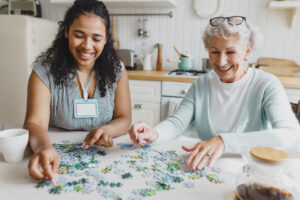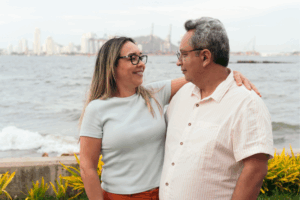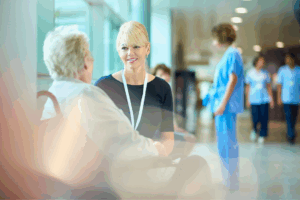As a kid, I was always captivated by Rube Goldberg machines, especially in the movies. They have a tendency to flow beautifully to music, such as Dick Van Dyke’s tiny Ferris wheel in Chitty Chitty Bang Bang that delivers fresh eggs to the pan for frying. There’s an appeal to a machine so absurdly dysfunctional, where the mechanics so greatly outweigh the service they provide. Clearly it would be easier to just pick up an egg and crack it than to build a miniature Ferris wheel, but the machine itself becomes an object of wonder. Early computers, the size of a room, were akin to the Ferris wheel of eggs, in their ratio of mechanics to the value of their service. Today, big data and cloud technologies actually make it possible to streamline the mechanics of technology, so we can integrate it seamlessly into our lives. The cloud replaces “egg machines” with eggs that float magically across the room and crack themselves neatly for frying, without a sprawling mechanical interface that takes up half the kitchen.
This is great news for older adults who were previously hesitant towards using earlier technologies because of the complex and unwieldy interface they and the Internet provided. In the past, the clunky hardware and complex software of healthcare technology had been a primary factor separating the seniors who were technological “haves” from the “have-nots.” As cloud technology makes our gadgets and data become increasingly seamless and accessible, however, we can get a much more holistic integration of technology into older people’s lives. Several new healthcare apps provide an easy-to-use interface that keeps seniors seamlessly connected with their caregivers, and we can expect to see this market continue to grow in the next five years.
Making the Tech Invisible
One incredible benefit of cloud technology is invisible storage. You probably don’t think about it, but you use invisible cloud storage every time you use services like Spotify or Pandora, where your favorite stations and playlists aren’t stored as mp3s on your device. The same goes for business services like Google Docs or even Google Maps—there’s no way your phone could hold all the data necessary to map the entire world, but you can access it through your comparatively small device. Without this technology, our handheld electronics could never be capable of the wide range of applications they have today. The good news for you as a caregiver is that this technology is also making it possible for new smartphone apps to collect information, updates, and healthcare data and transfer it to you or your loved one’s primary doctor automatically through cloud technology. It’s also enabled a much more age-friendly interface that doesn’t require a lot of buttons and choices. Remember the “Jitterbug” phone? Well, smartphone apps are taking that same no-fuss approach to data collection, making it easier than ever to (literally and figuratively) keep your finger on the pulse on your loved one’s health and happiness.
Combining Data Collection and Transmission
HeartPal is an app that monitors the user’s blood pressure, but it also logs, tracks, and analyzes it—and shares that data with their doctor. With the first steps in healthcare tracking technology, we saw equipment that could collect information, but then it was up to the patient and doctor to actually record and analyze that information. Now, with cloud technology, those steps are all taken care of by the app itself. With in-app reminders to keep the user on schedule, and automatic data sharing, the app takes on a role almost closer to that of a nurse or personal assistant than a traditional medical device such as a heart-rate monitor or stethoscope. The result is a tool that feels like a natural extension of one’s lifestyle, rather than an additional task to remember.
The Benefits of Holistic Integration
Ideally, technology is there to make our lives easier, right? Sometimes when you can’t find your phone charger or your WiFi is on the fritz, it’s easy to forget—but ultimately our gadgets are there to take care of some of the daily chores we have, whether that’s reminding us to take our pills, tracking our exercise activity, or measuring our blood pressure, and as we get older there are more and more daily healthcare tasks to remember. Having a seamless interface that takes care of the task completely gives us more time for living—exactly what you want your loved one to spend their golden years doing. That way visits don’t have to center around asking your loved one about their pills, checking their blood pressure, and going over the details of their medication schedule. You can just enjoy spending time together.
Getting Connected: Apps for Caregivers
Besides HeartPal and apps designed for older adults, you can find healthcare tracking apps like CareZone that are actually designed for the network of people that are involved in your loved one’s care. It creates a comprehensive care profile with a shareable health journal, to-do lists, and file storage for healthcare information. This app takes all that information you’d normally be jotting down, emailing, filing, and everything else, and stores it all away neatly in the cloud, so that your doctor and fellow caregivers can access it. Being aware of these resources can take some of the stress out of caregiving, just like healthcare tracking apps can alleviate the stress of your loved one’s daily medical chores.
If you’re ready to get connected and let technology lighten some of the stress of caregiving, don’t hesitate to reach out for additional support. IOA offers counseling, education, and other resources for caregivers and their loved ones. We’d be happy to speak with you.







